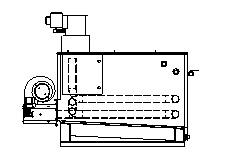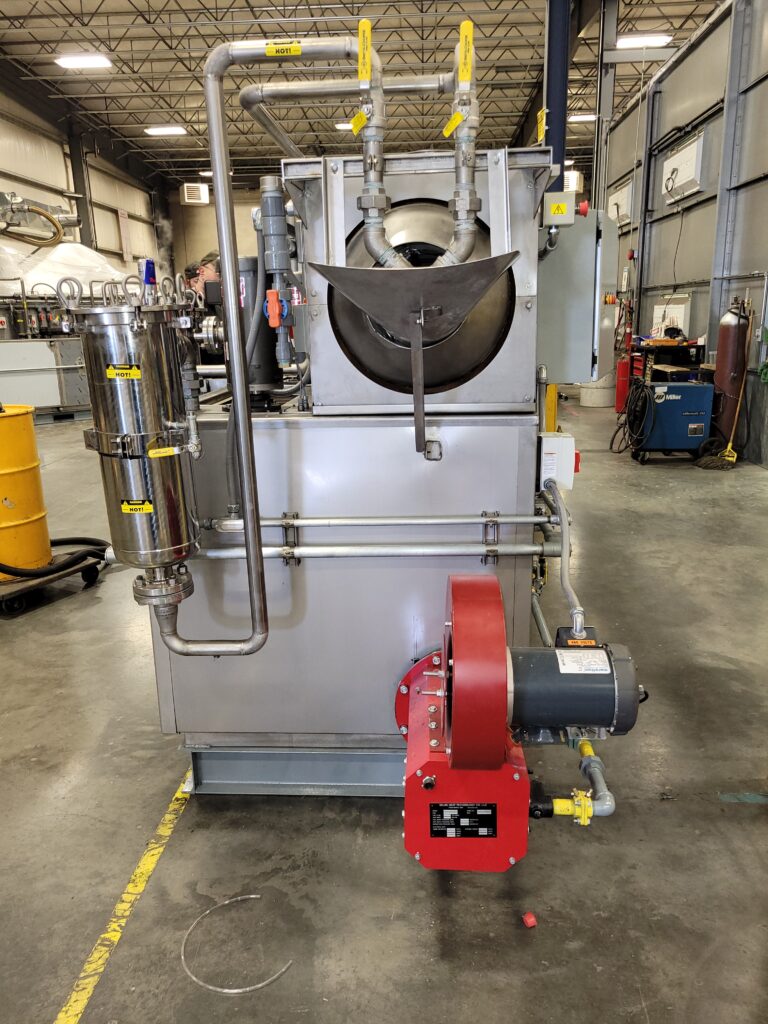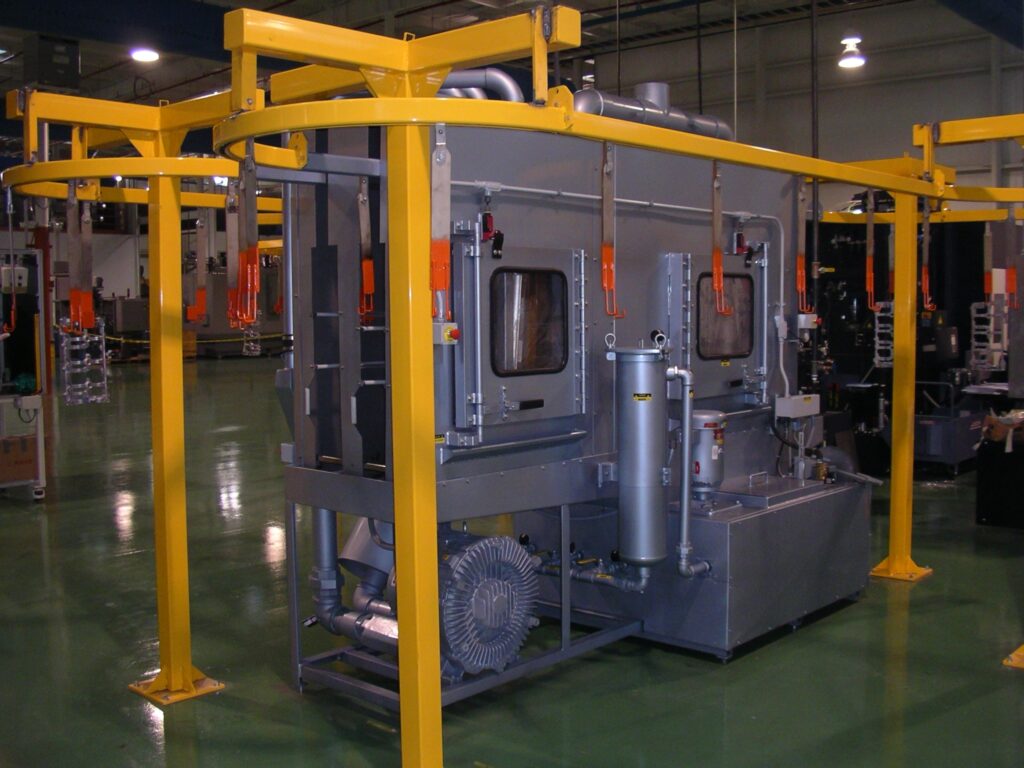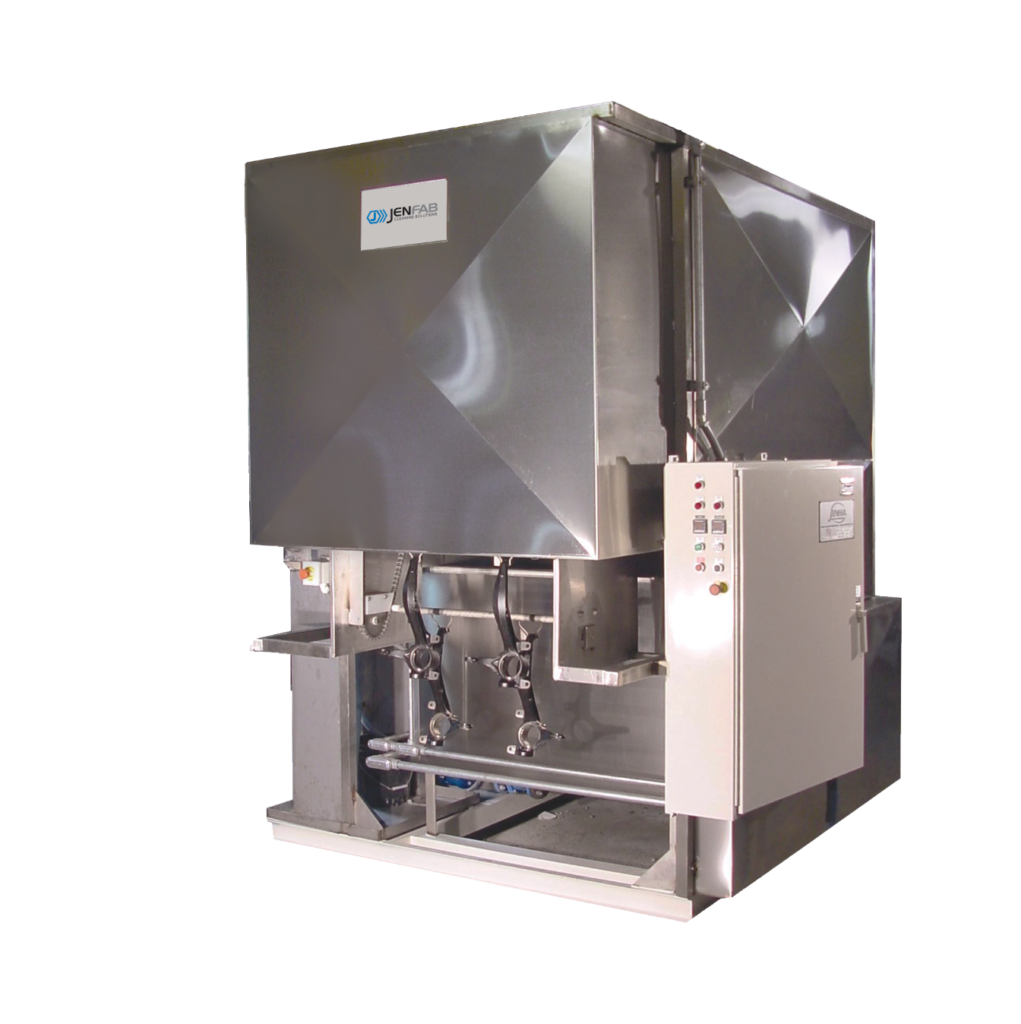Heated parts washers boost cleaning efficiency. Heat increases chemical reaction rates, which speeds up your cleaning time and helps sanitize parts.
When your immersion heater stops operating correctly, your parts washer won’t clean as it should. Check your heater regularly to catch wear and corrosion that could be affecting its operation.
Is your screw plug heater on its last leg? Learn how to replace an immersion heater plug on a parts washer. This article covers installing a screw plug heater and choosing the best type for your application.
How to Install a Screw Plug Immersion Heater
Screw plug immersion heaters work well for warming small tanks. These heaters sit inside the solution tank, transferring heat directly to the aqueous cleaning solution.
Installing a screw plug heater is simple. These heaters are screwed directly through a threaded opening in the machine’s tank. Before you begin, make sure your parts washer is not in operation.
Do not install a screw plug heater near combustible vapors or in a flammable gas atmosphere because it could ignite.
If you have questions about replacing your screw plug heater, contact the experts at Jenfab. We will walk you through the process or schedule a visit to repair your machine.
1. Turn the system OFF
Ensure the aqueous parts washer is OFF and not in operation. Empty the solution tank.
2. Uninstall the old heater
Carefully remove the worn or broken screw plug heater from the threaded opening in the parts washer’s tank.
3. Check the new heater
Examine the new screw plug immersion heater for any missing pieces or damage before installing it. Do not install a heater you think may be faulty.
4. Review the heater’s placement
The threaded opening already on your tank should be in the correct position for your application. Just in case, make sure your heater placement meets these recommendations.
A screw plug heater should be 2” below the tank’s minimum liquid level and 1” to 2” above the maximum expected amount of sediment.
Screw plug heaters should always remain immersed entirely in the aqueous solution. They should always be covered by the liquid. They must be installed below the lowest liquid level that occurs during cleaning.
Sludge and sediment will collect at the bottom of the tank, so the heater should sit above these collections for optimal results.
5. Apply a sealing compound
Before installing, cover the heater’s threads with a pipe sealing compound.
6. Screw the heater into the threaded opening
Bring the heater up to the threaded opening in the tank wall. Use a wrench to tighten the hex portion of the heater in the threaded opening.
Be careful not to over-tighten the heater. Doing so could damage the treads and cause the tank to leak.
Once it’s in place, test it out! Fill the tank with solution again and run a test cleaning cycle.
You want to ensure the tank comes to the required temperature and that the heater’s thermostat or controls are not going to get wet via condensation or a leak.
Choosing the Right Screw Plug Heater for Your Heated Parts Washer
Screw plug heaters are hairpin tubular elements welded onto a pipe threaded fitting. The components of a screw plug heater include a sheath and heating elements that come in various wattages.
Protection from Corrosion: Sheath Material
Screw plug sheaths can be brass, copper, steel or stainless steel. A popular sheath material is Incoloy®, a corrosion-resistant material with a nickel-iron-chromium base.
An immersion heater’s sheath material must be able to withstand the cleaning solution or liquid it rests in. If you pair cleaning solutions or soils with an incompatible material, it will damage the heater.
| Sheath Material | Maximum Temperature | Common Uses |
| Copper | 350℉ | Clean Water |
| Steel | 750℉ | Oil, Petroleum |
| Stainless Steel | 1200℉ | Food Processing Equipment, Cutting Oils, Medical Equipment, Alkaline Cleaning Solutions, Wax |
| Incoloy® | 1500℉ | Cleaning & Degreasing Solutions, Pickling Solutions, Corrosive Solutions |
Electrical Power: What’s Enough Watts?
Effective heaters increase and maintain the cleaning solution’s temperature. Too much electrical power can scorch the liquid, potentially harming the parts inside the machine. Too little, and the solution tank won’t maintain its temperature.
Screw plug heaters work best for small heated parts washers. Smaller tanks are easier for this type of immersion heater to warm and maintain. When determining the appropriate heater wattage for a parts washer, consider these three things:
1. Startup
Creating the starting temperature takes the most wattage. Can the heater transfer enough heat to meet the required temperature? The temperature difference, size of the tank and type of cleaning solution affect how much power the heater needs initially to warm the tank.
2. Operation
Once the heater meets the required temperature, it must maintain it without losing too much heat or overheating. Operational heat is the heat required to keep a consistent temperature during the cleaning process.
3. Heat Loss
Every heated parts washer loses heat as it operates. A heater’s task is to preserve the required temperature while facing potential heat loss. The tank material and insulation can decrease the amount of heat lost per cleaning cycle.
Parts Washer Maintenance: Screw Plug Heater
All equipment needs to be repaired or replaced eventually. You can ensure your screw plug immersion heater lasts a bit longer by first selecting a material that suits your application. Over time, buildup can form on screw plug heaters because they sit inside the liquid cleaning solution.
Limescale can develop if you’re heating water and water-based solutions. For those heating oils, overheating can cause coking, which may burn oil onto the immersion length of the heater. These buildups can be cleaned and scrubbed off with a wire brush.
If your heater is no longer working, you can find a replacement online at Jenfab Cleaning Solutions. We offer spare parts and replacement heaters for parts washers.
Our options include 9KW, 12KW and 18KW screw plug heaters, each welded to 2” NPT fittings.
Not sure what you need?
Want our technicians to take a look?
Connect with a technician and send us a maintenance request today. We’d be happy to help you determine what to order or visit your facility to upgrade your worn screw plug heater.



















